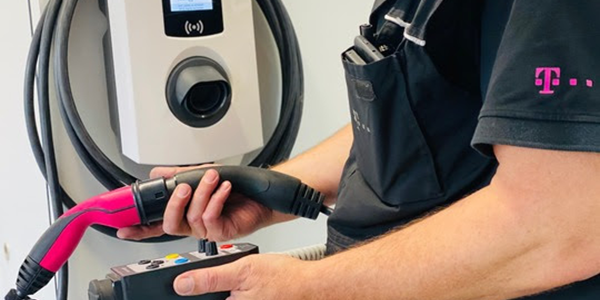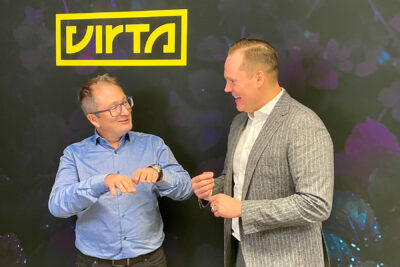Vattenfall & Telekom are targeting the home charging market
Vattenfall and Deutsche Telekom will be working together in the future on the nationwide expansion of charging infrastructure in the private sector. The duo wants to target both private owners of EVs and companies that want to offer charging infrastructure in their parking lots.
The offer includes the installation of wall box charging stations according to a “fast and standardized procedure with excellent installation service” and is to be rolled out nationwide in the second quarter of 2021. In doing so, the partners want to play to their strengths in the area of power grid connections. The project is being managed via the VLINK platform of Vattenfall Smarter Living GmbH, a young business unit of the Swedish utility. Managing Director Markus Reinhardt: “Thanks to state funding, the sale of electric vehicles in Germany is booming like never before. The demand to install wall boxes is also correspondingly high.”
Telekom has a nationwide mobile communications network and more than 7,000 employees in the technical field service. This makes it the ideal partner, Reinhardt explains. The company can implement the installation of wall boxes in large numbers as quickly as possible, even in the private customer sector. “As a result, VLINK can offer the connected partners a scalable solution and, at the same time, a reliable personal service.”
Covered is the complete service in the field of e-mobility: from on-site consultation and professional installation of the wall box to the required registration with the respective network operator and maintenance. “Together with Vattenfall, we will be able to further develop the future market and expand the collaboration with the industry,” says Andreas Elberg, division manager at T-Systems for site services, a wholly-owned subsidiary of Deutsche Telekom with a focus on IT development and consulting services, including the area of e-mobility.
Interested customers will soon be offered an online appointment to assess on-site options, Telekom says in an accompanying press release. “Here, the individual options at the customer’s site will be digitally assessed via video broadcast and recorded in real time on the VLINK platform. As a result, the technicians receive a good impression of the area in which the equipment is to be installed without even having to visit the site in person.” The subsequent assembly and installation of the charging infrastructure can be planned individually on this basis.
Telekom is already present on the market for public charging infrastructure. It has already set up fast-charging points throughout Germany under the Comfort Charge label. In addition to its role as a charging point operator, it was also active as a mobility service provider until mid-2020 with its “Get Charge” charging service. However, Telekom sold this business last summer to the Swiss energy provider Alpiq, which discontinued the offering six months after the takeover at the turn of the year.
For its part, Vattenfall has equal ambitions in the public, semi-public and private charging infrastructure markets. For example, the Swedes are present in some countries with their own charging network and throughout Europe with an international charging tariff offer called InCharge – including in Germany. Through Vattenfall Smarter Living GmbH, the group has also introduced the white-label platform VLINK, which allows municipal utilities, among others, to handle their sales processes completely digitally, from the first customer contact to the commissioning of service providers and specialist partners. In addition, VLINK also offers support services in the areas of photovoltaics, storage and charging infrastructure. The company’s goal is to support partners and their customers in the energy transition in their own homes, it says. The platform is already being used by more than 50 customers, primarily municipal utilities.





0 Comments